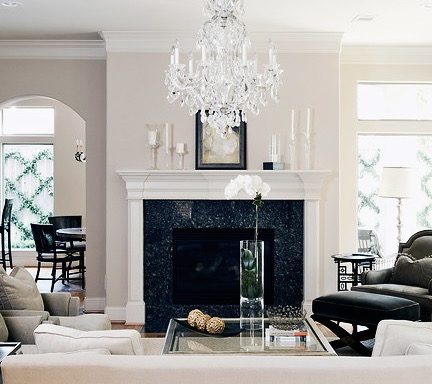Kitchen lighting is an essential aspect of any well-designed kitchen. It not only provides illumination for cooking and food preparation but also sets the mood and ambiance of the space. One popular option for kitchen lighting is wall lamps. Wall lamps offer a unique and versatile lighting solution that can enhance both the functionality and aesthetics of your kitchen. In this article, we will explore the benefits of using wall lamps in your kitchen, the different types of wall lamps available, how to choose the right wall lamp for your kitchen, installation tips, maintenance advice, creative ways to incorporate wall lamps into your kitchen decor, a comparison between wall lamps and ceiling lamps, cost-effective ways to illuminate your kitchen with wall lamps, and top wall lamp brands for your kitchen lighting needs.
Benefits of Using Wall Lamps in Your Kitchen
1. Increased flexibility and control over lighting: Wall lamps provide flexibility in terms of positioning and directionality. Unlike ceiling lights that are fixed in one location, wall lamps can be easily adjusted to provide light exactly where you need it. This allows for better task lighting when cooking or preparing food, as well as the ability to create different lighting zones in your kitchen.
2. Improved task lighting for cooking and food preparation: Proper task lighting is crucial in the kitchen to ensure safety and efficiency while cooking. Wall lamps can be strategically placed above countertops, sinks, or stovetops to provide focused illumination on these areas. This makes it easier to see what you’re doing and reduces the risk of accidents or injuries.
3. Enhanced ambiance and mood lighting: In addition to task lighting, wall lamps can also be used to create a warm and inviting ambiance in your kitchen. By using dimmable wall lamps or those with adjustable brightness levels, you can easily control the intensity of the light and set the desired mood for different occasions. Whether you want a bright and energetic atmosphere for cooking or a soft and cozy ambiance for entertaining guests, wall lamps can help you achieve the desired effect.
4. Space-saving design: Wall lamps are a great option for kitchens with limited space or low ceilings. Unlike pendant lights or chandeliers that hang from the ceiling and take up valuable headroom, wall lamps are mounted on the wall, saving both vertical and horizontal space. This makes them ideal for small kitchens or areas where you want to maximize the available space without compromising on style or functionality.
Types of Wall Lamps for Kitchen Illumination
1. Swing arm wall lamps: Swing arm wall lamps are a popular choice for kitchen lighting due to their adjustable arms that can be extended or retracted as needed. This allows you to direct the light exactly where you need it, making them perfect for task lighting above countertops or sinks. Swing arm wall lamps come in various styles and finishes to complement any kitchen decor.
2. Sconces: Sconces are wall-mounted light fixtures that can provide both ambient and task lighting in your kitchen. They come in a wide range of designs, from traditional to modern, and can be installed in pairs or as a single statement piece. Sconces are often used to flank a mirror or artwork in the kitchen, adding a touch of elegance and sophistication to the space.
3. Picture lights: If you have artwork or decorative pieces displayed on your kitchen walls, picture lights can be a great way to highlight them. These small, focused lights are designed to illuminate artwork without casting shadows or causing glare. Picture lights come in various styles and sizes, allowing you to choose one that complements your kitchen decor and enhances the visual appeal of your artwork.
4. Puck lights: Puck lights are small, round LED lights that can be mounted on the wall or under cabinets to provide focused task lighting in your kitchen. They are often used to illuminate countertops, backsplashes, or inside cabinets and drawers. Puck lights are compact and discreet, making them a popular choice for modern and minimalist kitchen designs.
5. Track lighting: Track lighting consists of a track mounted on the ceiling or wall with adjustable light fixtures that can be moved along the track to provide flexible lighting options. In the kitchen, track lighting can be used to highlight specific areas or objects, such as a kitchen island or a collection of cookbooks. It offers versatility in terms of positioning and directionality, allowing you to create different lighting effects in your kitchen.
How to Choose the Right Wall Lamp for Your Kitchen
1. Consider the size and layout of your kitchen: Before choosing a wall lamp for your kitchen, consider the size and layout of the space. If you have a small kitchen, opt for compact wall lamps that don’t take up too much space. For larger kitchens, you can choose larger wall lamps or multiple wall lamps to provide adequate lighting coverage.
2. Determine your lighting needs and preferences: Think about how you use your kitchen and what type of lighting you need. If you do a lot of cooking and food preparation, prioritize task lighting and choose wall lamps that provide focused illumination on countertops, sinks, or stovetops. If you entertain frequently in your kitchen, consider wall lamps with dimmable or adjustable brightness settings to create the desired ambiance.
3. Choose a style that complements your kitchen decor: Wall lamps come in a wide range of styles, from traditional to modern, so choose one that complements your kitchen decor. Consider the overall design theme of your kitchen and select wall lamps that blend seamlessly with the existing elements, such as cabinets, countertops, and backsplashes. This will ensure a cohesive and harmonious look in your kitchen.
4. Consider the bulb type and wattage: When choosing a wall lamp for your kitchen, consider the type of bulb it uses and its wattage. LED bulbs are energy-efficient and long-lasting, making them a popular choice for kitchen lighting. Additionally, consider the wattage of the bulb to ensure that it provides adequate brightness for your needs. For task lighting, opt for higher wattage bulbs, while for ambient or mood lighting, lower wattage bulbs may be sufficient.
Installation Guide for Wall Lamps in Your Kitchen
1. Tools and materials needed: Before starting the installation process, gather the necessary tools and materials. You will need a screwdriver, a drill with the appropriate drill bit, wall anchors (if necessary), screws, wire connectors, a voltage tester, and a ladder or step stool.
2. Step-by-step instructions for installation:
– Start by turning off the power to the area where you will be installing the wall lamp. This can be done by switching off the circuit breaker or removing the fuse.
– Use a voltage tester to ensure that there is no electrical current running through the wires.
– Determine the desired height and location for the wall lamp. Mark the position on the wall using a pencil.
– If necessary, use a drill and the appropriate drill bit to create holes for wall anchors. Insert the wall anchors into the holes.
– Attach the mounting plate or bracket to the wall using screws. Make sure it is securely fastened.
– Connect the wires from the wall lamp to the corresponding wires in the electrical box using wire connectors. Follow the manufacturer’s instructions for proper wiring.
– Attach the wall lamp to the mounting plate or bracket using screws. Make sure it is level and secure.
– Turn on the power and test the wall lamp to ensure that it is functioning properly.
3. Safety tips:
– Always turn off the power before starting any electrical work.
– Use caution when working with electricity and follow all safety guidelines.
– If you are unsure about any aspect of the installation process, consult a professional electrician.
Maintenance Tips for Your Kitchen Wall Lamp

1. Cleaning and dusting: Regularly clean and dust your wall lamp to keep it looking its best. Use a soft, lint-free cloth or a feather duster to gently remove any dust or debris from the surface of the lamp. Avoid using harsh chemicals or abrasive materials that could damage the finish.
2. Replacing bulbs: When a bulb in your wall lamp burns out, make sure to replace it promptly. Follow the manufacturer’s instructions for replacing bulbs and ensure that you use the correct type and wattage. Turn off the power before replacing the bulb to avoid any electrical accidents.
3. Checking for loose connections: Periodically check the connections of your wall lamp to ensure that they are secure. Over time, vibrations or movement can cause wires to become loose, which can affect the functionality of the lamp. If you notice any loose connections, tighten them or consult a professional electrician for assistance.
Creative Ways to Incorporate Wall Lamps in Your Kitchen Decor
1. Using wall lamps as accent lighting: Wall lamps can be used to highlight specific areas or objects in your kitchen, such as a piece of artwork, a decorative backsplash, or open shelving. By positioning wall lamps strategically, you can draw attention to these elements and create visual interest in your kitchen.
2. Creating a focal point with a statement wall lamp: If you want to make a bold statement in your kitchen, consider using a statement wall lamp as a focal point. Choose a wall lamp with an eye-catching design or unique shape that stands out against the rest of your kitchen decor. This will not only provide functional lighting but also serve as a conversation piece.
3. Incorporating wall lamps into a gallery wall: If you have a gallery wall in your kitchen, consider adding wall lamps to enhance the visual impact. Position wall lamps above or beside the artwork to provide focused illumination and create a dramatic effect. This will not only showcase your artwork but also add depth and dimension to your kitchen decor.
Wall Lamp vs. Ceiling Lamp: Which One is Better for Your Kitchen?
1. Pros and cons of each option:
– Wall lamps:
– Pros: Wall lamps offer flexibility in terms of positioning and directionality, allowing you to adjust the light exactly where you need it. They can provide focused task lighting and create different lighting zones in your kitchen. Wall lamps also save space and can be used as decorative elements in your kitchen decor.
– Cons: Wall lamps may not provide as much overall illumination as ceiling lamps, especially in larger kitchens. They require proper installation and wiring, which may require professional assistance.
– Ceiling lamps:
– Pros: Ceiling lamps provide overall illumination for the entire kitchen space. They are easy to install and require minimal maintenance. Ceiling lamps come in a wide range of styles and designs to suit any kitchen decor.
– Cons: Ceiling lamps are fixed in one location and cannot be easily adjusted or directed. They may not provide focused task lighting for specific areas in the kitchen.
2. Factors to consider when choosing between the two:
– Size and layout of the kitchen: Consider the size and layout of your kitchen when choosing between wall lamps and ceiling lamps. If you have a small kitchen or limited space, wall lamps may be a better option as they save space and offer flexibility in positioning. For larger kitchens or open-concept spaces, ceiling lamps may provide better overall illumination.
– Lighting needs and preferences: Think about how you use your kitchen and what type of lighting you need. If you do a lot of cooking or food preparation, wall lamps can provide focused task lighting on countertops or sinks. If you prefer a well-lit space for entertaining or socializing, ceiling lamps may be more suitable.
– Design and style: Consider the design theme and style of your kitchen when choosing between wall lamps and ceiling lamps. Wall lamps can be used as decorative elements and can enhance the visual appeal of your kitchen decor. Ceiling lamps come in various styles and designs, allowing you to choose one that complements your kitchen decor.
Cost-Effective Ways to Illuminate Your Kitchen with Wall Lamps
1. DIY wall lamp projects: If you’re on a budget or enjoy DIY projects, consider making your own wall lamps for your kitchen. There are numerous online tutorials and resources available that provide step-by-step instructions for creating unique and personalized wall lamps using affordable materials. This allows you to customize the design, size, and finish of the wall lamp to suit your kitchen decor.
2. Affordable wall lamp options: If you prefer ready-made wall lamps, there are plenty of affordable options available on the market. Look for sales, discounts, or clearance items to find wall lamps at a lower price. Additionally, consider purchasing wall lamps from budget-friendly brands or retailers that offer affordable lighting solutions.
Top Wall Lamp Brands for Your Kitchen Lighting Needs
1. Overview of popular wall lamp brands:
– IKEA: IKEA offers a wide range of affordable and stylish wall lamps that are perfect for kitchens. Their designs are modern and minimalist, making them suitable for various kitchen decor styles.
– West Elm: West Elm is known for its high-quality and stylish home furnishings, including wall lamps. They offer a variety of designs, from industrial to mid-century modern, that can add a touch of sophistication to your kitchen.
– Hudson Valley Lighting: Hudson Valley Lighting is a renowned brand that specializes in high-end lighting fixtures. They offer a wide selection of wall lamps in various styles and finishes, allowing you to find the perfect option for your kitchen.
2. Features and benefits of each brand:
– IKEA: IKEA wall lamps are known for their affordability, functionality, and modern design. They offer a range of options, from adjustable swing arm lamps to decorative sconces, that can suit any kitchen lighting needs.
– West Elm: West Elm wall lamps are known for their high-quality craftsmanship and stylish designs. They offer a variety of finishes, such as brass, bronze, and nickel, that can complement any kitchen decor.
– Hudson Valley Lighting: Hudson Valley Lighting wall lamps are known for their superior quality and attention to detail. They use high-quality materials and innovative designs to create wall lamps that are both functional and visually appealing.
3. Customer reviews and ratings: Before purchasing a wall lamp, it’s always a good idea to read customer reviews and ratings to get an idea of the product’s quality and performance. Look for reviews that specifically mention the use of the wall lamp in the kitchen to ensure that it meets your specific needs.
Wall lamps are a versatile and stylish option for kitchen lighting. They offer increased flexibility and control over lighting, improved task lighting for cooking and food preparation, enhanced ambiance and mood lighting, and a space-saving design. When choosing a wall lamp for your kitchen, consider the size and layout of your kitchen, your lighting needs and preferences, the style that complements your kitchen decor, and the bulb type and wattage. Follow the installation guide for proper installation and maintenance tips to keep your wall lamp in optimal condition. Get creative with how you incorporate wall lamps into your kitchen decor by using them as accent lighting, creating a focal point with a statement wall lamp, or incorporating them into a gallery wall. Consider the placement of the wall lamps to ensure they provide adequate lighting for specific areas such as the countertop, sink, or dining area. Additionally, consider the finish and material of the wall lamp to ensure it matches the overall aesthetic of your kitchen. With the right wall lamps, you can transform your kitchen into a well-lit and stylish space that meets all your lighting needs.




